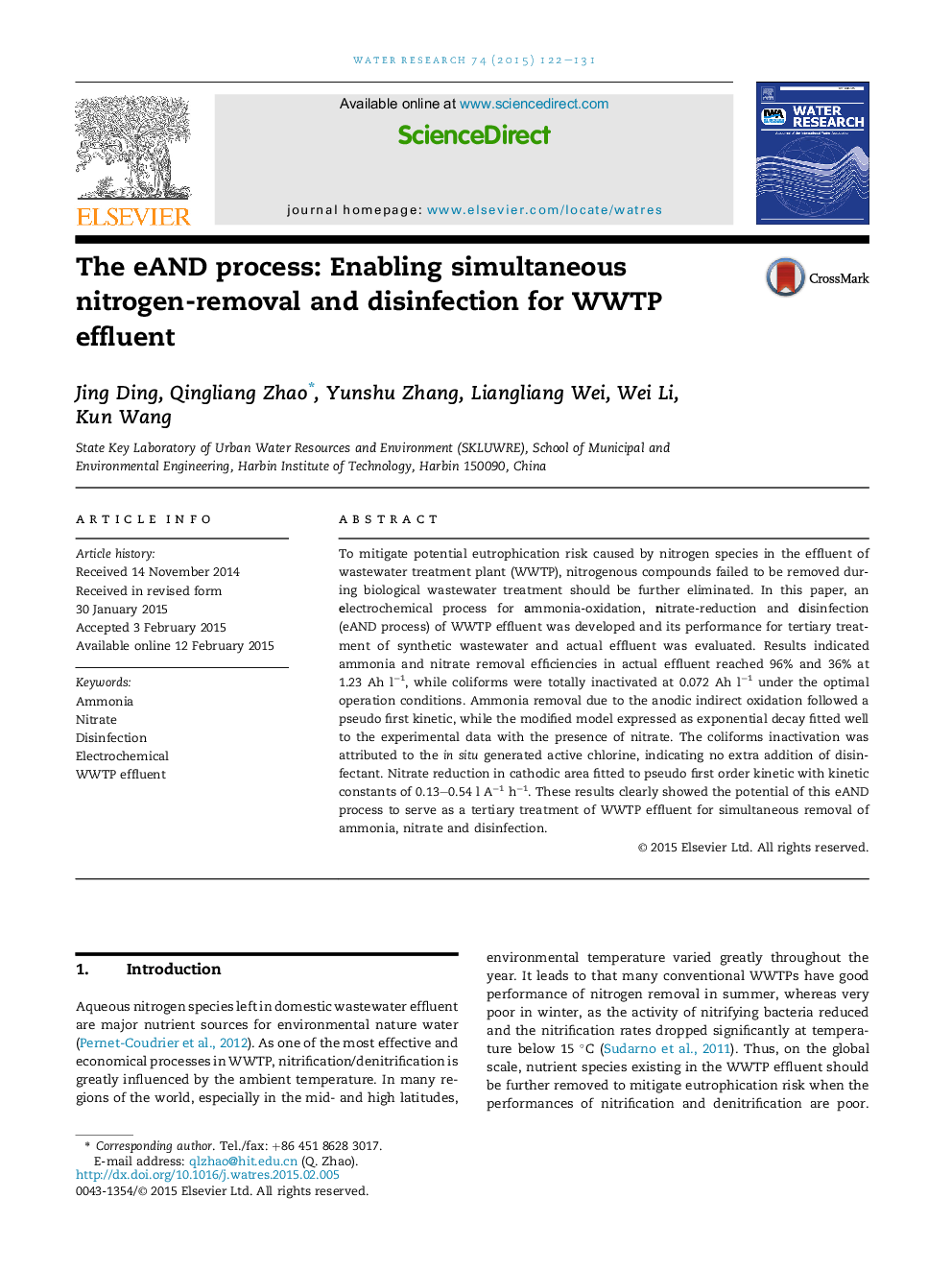| Article ID | Journal | Published Year | Pages | File Type |
|---|---|---|---|---|
| 4481270 | Water Research | 2015 | 10 Pages |
•The eAND process for nitrogen-removal and disinfection was developed.•NH4+NH4+ and NO3−NO3− removal efficiencies were 96% and 36% respectively at 1.23 Ah l−1.•Complete inactivation of coliforms in WWTP effluent achieved at 0.072 Ah l−1.•Ammonia and coliforms removal was due to the in situ generated active chlorine.•With the presence of NO3−NO3−, NH4+NH4+ oxidation kinetic was modified as exponential decay.
To mitigate potential eutrophication risk caused by nitrogen species in the effluent of wastewater treatment plant (WWTP), nitrogenous compounds failed to be removed during biological wastewater treatment should be further eliminated. In this paper, an electrochemical process for ammonia-oxidation, nitrate-reduction and disinfection (eAND process) of WWTP effluent was developed and its performance for tertiary treatment of synthetic wastewater and actual effluent was evaluated. Results indicated ammonia and nitrate removal efficiencies in actual effluent reached 96% and 36% at 1.23 Ah l−1, while coliforms were totally inactivated at 0.072 Ah l−1 under the optimal operation conditions. Ammonia removal due to the anodic indirect oxidation followed a pseudo first kinetic, while the modified model expressed as exponential decay fitted well to the experimental data with the presence of nitrate. The coliforms inactivation was attributed to the in situ generated active chlorine, indicating no extra addition of disinfectant. Nitrate reduction in cathodic area fitted to pseudo first order kinetic with kinetic constants of 0.13–0.54 l A−1 h−1. These results clearly showed the potential of this eAND process to serve as a tertiary treatment of WWTP effluent for simultaneous removal of ammonia, nitrate and disinfection.
Graphical abstractFigure optionsDownload full-size imageDownload high-quality image (205 K)Download as PowerPoint slide
